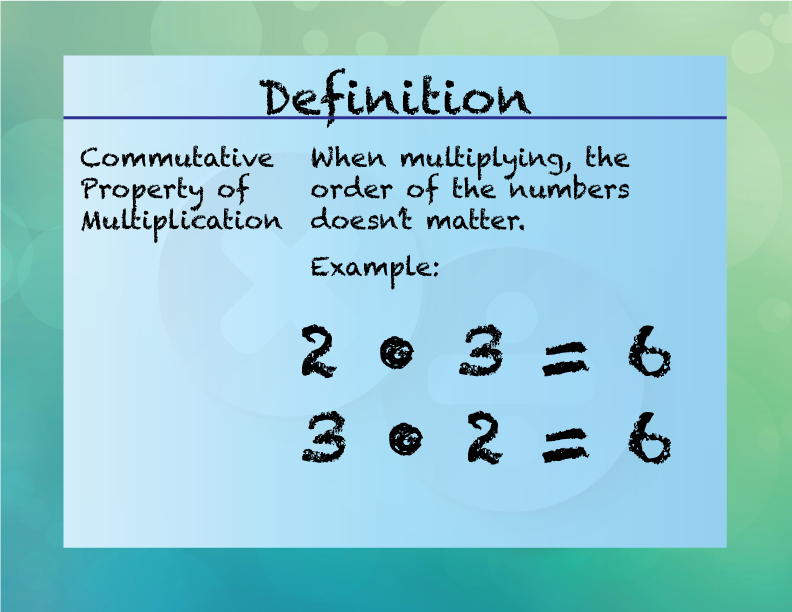
Display Title
Elementary Definition--Multiplication and Division Concepts--Commutative Property
Display Title
Commutative Property

Topic
Multiplication and Division
Definition
The commutative property states that the order of numbers does not change their sum or product.
Description
The commutative property is fundamental in arithmetic and algebra, indicating that the order of numbers in addition or multiplication does not affect the result. For instance, 4 + 5 is the same as 5 + 4, and similarly, 3 × 7 equals 7 × 3. This property is essential for simplifying calculations and solving equations. In real-world applications, it is used in various fields such as engineering, computer science, and economics to streamline processes and calculations. Understanding the commutative property helps students develop a flexible approach to problem-solving and enhances their ability to manipulate mathematical expressions effectively.
For elementary students: "Does a 2 x 3 array have the same number of items as a 3 x 2 array? How do you know?"
For a complete collection of terms related to Multiplication and Division click on this link: Multiplication and Division Collection
| Common Core Standards | CCSS.MATH.CONTENT.4.OA.B.4, CCSS.MATH.CONTENT.3.OA.C.7, CCSS.MATH.CONTENT.3.OA.B.5 |
|---|---|
| Grade Range | 2 - 4 |
| Curriculum Nodes |
Arithmetic • Multiplication • Multiplication Expressions and Equations |
| Copyright Year | 2021 |
| Keywords | multiplication, division, equation |